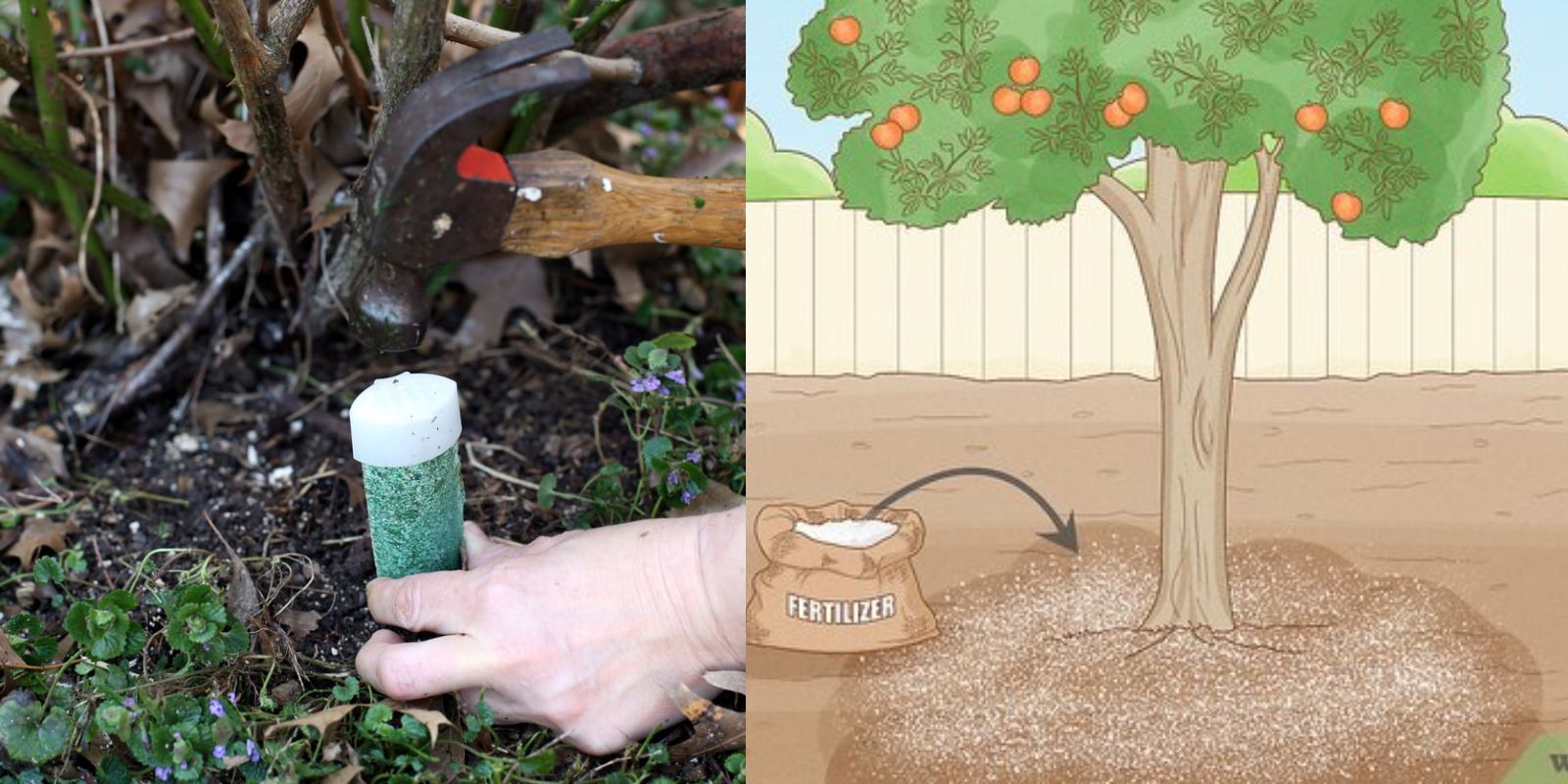Fruit trees are a rewarding addition to any garden, offering beauty and delicious harvests year after year. However, to keep them thriving, fertilization is key. Properly fertilized fruit trees grow stronger, produce more fruit, and resist diseases better than neglected ones. This article explores everything you need to know about fertilizing fruit trees, from understanding their nutrient needs to best practices for application.
Why Fertilize Fruit Trees?
Fruit trees draw nutrients from the soil to support growth, flower production, and fruiting. Over time, the soil’s natural reserves deplete, leading to slower growth and reduced harvests. Fertilizing replenishes these nutrients, ensuring your trees have the essentials for optimal health and productivity.
Benefits of fertilizing fruit trees:
- Encourages healthy growth and vibrant foliage.
- Boosts flowering and fruit production.
- Enhances resistance to pests and diseases.
- Improves the taste and quality of the fruit.
Key Nutrients for Fruit Trees
Fruit trees primarily need three macronutrients:
- Nitrogen (N): Promotes leafy growth and overall tree vigor.
- Phosphorus (P): Supports root development and flower production.
- Potassium (K): Enhances fruit quality and disease resistance.
In addition to these, micronutrients like calcium, magnesium, and zinc are also vital, though required in smaller quantities.
When to Fertilize Fruit Trees
Timing is crucial for effective fertilization:
- Early Spring: Fertilize before the tree begins to bud. This supports new growth and prepares the tree for the growing season.
- Mid-Summer (Optional): Apply a second round for young trees or those needing an extra boost. Avoid late-season fertilization as it can stimulate growth that may not harden off before winter.
Choosing the Right Fertilizer
The best fertilizer for fruit trees depends on the tree’s age, type, and soil condition. Here are some popular options:
- Balanced Fertilizers: Products like 10-10-10 provide equal amounts of nitrogen, phosphorus, and potassium, making them ideal for most trees.
- Organic Fertilizers: Options like compost, aged manure, or fish emulsion are environmentally friendly and improve soil structure.
- Specialized Fertilizers: Certain fruit trees, such as citrus, benefit from fertilizers designed specifically for their needs, often enriched with micronutrients.
How to Test Your Soil
Before fertilizing, test your soil to determine its nutrient composition. Soil testing kits are widely available and easy to use. Testing ensures you don’t over-fertilize, which can harm your trees and the environment.
Step-by-Step Guide to Fertilizing Fruit Trees
Step 1: Assess Tree Size and Age
- For young trees (1–2 years), use less fertilizer since their roots are still developing.
- Mature trees require more nutrients to support their larger canopy and fruiting needs.
Step 2: Measure the Fertilizer
Follow the manufacturer’s instructions to determine the right amount. Typically, this is based on the tree’s trunk diameter or canopy spread.
Step 3: Apply Fertilizer Evenly
- Spread the fertilizer evenly beneath the tree’s canopy, avoiding direct application near the trunk.
- For best results, extend the application area to match the root zone, which often goes beyond the canopy.
Step 4: Incorporate into the Soil
- Gently rake or mix the fertilizer into the topsoil to prevent runoff.
- Organic fertilizers can be left on the surface, as they break down naturally.
Step 5: Water Thoroughly
Watering helps dissolve the fertilizer, allowing nutrients to reach the roots more effectively.
Special Considerations for Different Fruit Trees
Different fruit trees have unique fertilization requirements:
- Citrus Trees
- Need regular feeding every 1–2 months during the growing season.
- Require extra nitrogen and micronutrients like magnesium and iron.
- Apple and Pear Trees
- Benefit from a single application in spring.
- Avoid over-fertilizing as excessive nitrogen can reduce fruiting.
- Stone Fruit (Peaches, Plums, Cherries)
- Prefer balanced fertilizers with moderate nitrogen levels.
- Fertilize after fruit harvest to support next year’s growth.
- Berry Bushes
- Require lighter fertilization than trees.
- Organic mulches like compost are often sufficient.
Tips for Successful Fertilization
- Mulch for Extra Benefits: Apply a layer of organic mulch around the tree base to retain moisture and improve soil health.
- Don’t Overdo It: Over-fertilizing can lead to excessive leafy growth and fewer fruits. Stick to recommended quantities.
- Combine with Pruning: Prune trees annually to direct energy into productive branches.
- Avoid Late Fertilization: Feeding late in the season can result in tender growth that’s vulnerable to frost.
- Regular Soil Testing: Monitor soil conditions annually to adjust fertilization as needed.
Common Mistakes to Avoid
- Ignoring Soil Testing: Applying fertilizer without understanding soil needs can be wasteful or harmful.
- Fertilizing Too Close to the Trunk: This can damage the tree and lead to root burns.
- Neglecting Watering: Fertilizer won’t be effective if not watered in properly.
Organic Alternatives for Fertilizing Fruit Trees
For gardeners who prefer natural solutions, these organic options are excellent choices:
- Compost: Enriches soil and provides a steady nutrient supply.
- Manure: Aged manure adds organic matter and nutrients but should be used sparingly to avoid over-fertilizing.
- Bone Meal: High in phosphorus, ideal for flower and fruit production.
- Fish Emulsion: A liquid fertilizer rich in nitrogen, perfect for young trees.
Sustainable Fertilizing Practices
- Reuse Garden Waste: Turn kitchen scraps and yard clippings into compost.
- Practice Crop Rotation: If planting fruit trees in rows, rotate crops to maintain soil fertility.
- Reduce Chemical Use: Opt for slow-release or organic fertilizers to minimize environmental impact.
Conclusion
Fertilizing fruit trees is a vital part of their care, ensuring they grow strong and yield delicious fruits. By understanding your trees’ needs, choosing the right fertilizers, and following best practices, you can enjoy a thriving orchard in your garden.
What’s your go-to method for fertilizing fruit trees? Share your tips in the comments and help fellow gardeners grow their best harvest yet! 🌳🍎

